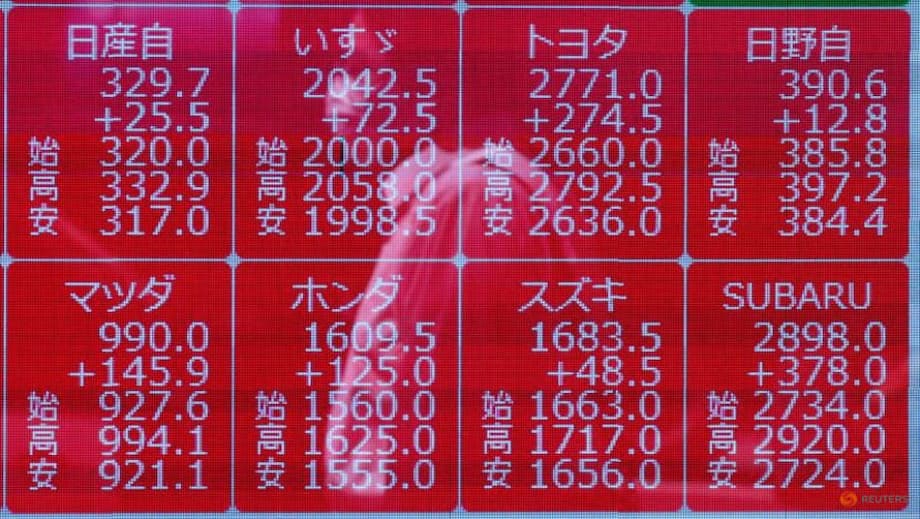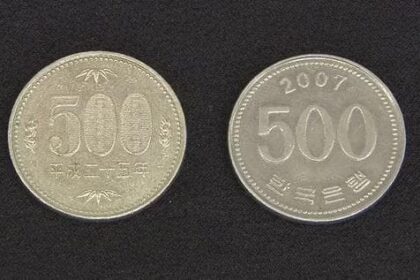Foreign Investors Pull Back from Japanese Stocks: What’s Behind the Shift and What Comes Next?
After months of relentless buying and record-breaking highs, foreign investors have abruptly turned net sellers of Japanese stocks for the first time in nine weeks. This reversal comes as the technology-driven rally that propelled the Nikkei 225 to new records stalled, prompting global investors to lock in profits and reassess their positions. The move has raised questions about the sustainability of Japan’s stock market boom, the underlying drivers of recent inflows, and what the future holds for both foreign and domestic investors.
- Foreign Investors Pull Back from Japanese Stocks: What’s Behind the Shift and What Comes Next?
- How Did Japan’s Stock Market Rally Unfold?
- What Triggered the Recent Selloff?
- How Are Japanese Investors Responding?
- What’s Driving the Broader Investment Case for Japan?
- Risks and Challenges Ahead
- What Sectors Are Attracting Attention?
- What’s Next for Japanese Stocks?
- In Summary
How Did Japan’s Stock Market Rally Unfold?
Japan’s equity markets have been on a remarkable run in 2025. The Nikkei 225, the country’s flagship index, surged to an all-time high of 43,876.42 in mid-August, capping a rally that saw the index climb nearly 39% from its lows in April. This surge was fueled by a combination of strong domestic economic data, robust corporate earnings, and a wave of foreign capital seeking alternatives to U.S. and Chinese markets.
Foreign investors were at the heart of this rally. According to Japan’s Ministry of Finance, overseas buyers pumped a net 4.22 trillion yen into Japanese stocks in the current quarter, adding to the massive 7.19 trillion yen net purchase made in the previous quarter. In the week of August 16 alone, foreign inflows reached 1.16 trillion yen ($7.87 billion), the largest weekly purchase in over four months. The rally was broad-based but especially pronounced in technology stocks, with companies like SoftBank Group soaring as much as 43.9% in a single month before facing heavy selling.
Why Did Foreign Investors Flock to Japan?
Several factors converged to make Japan an attractive destination for global capital in 2025:
- Global Diversification: With U.S. markets facing uncertainty from trade policy shifts and high valuations, and Chinese equities under pressure from regulatory crackdowns, Japan emerged as a relative safe haven.
- Corporate Governance Reforms: The Tokyo Stock Exchange (TSE) and government have pushed for improved corporate governance, urging companies to boost capital efficiency, increase dividends, and buy back shares. These reforms have made Japanese companies more attractive to shareholders.
- Favorable Currency Dynamics: A weaker yen made Japanese exports more competitive and boosted the value of foreign investments when converted back to dollars or euros.
- Structural Economic Shifts: Japan’s economy has shown resilience, with inflation finally taking hold after decades of deflation, and wage growth supporting domestic demand.
As J.P. Morgan analysts noted, “Japan stands out for its macro stability and safety amid global trade uncertainty, supported by cyclical and structural tailwinds in its equity markets.”
What Triggered the Recent Selloff?
Despite the strong fundamentals, the rally’s pace left markets vulnerable to a pullback. In the week to August 20, foreign investors sold a net 496.8 billion yen ($3.37 billion) of Japanese stocks, marking their first weekly net sales since June 21. The Nikkei 225 fell 1.72% that week, with technology giants like SoftBank Group and Advantest leading the declines.
This profit-taking was not entirely unexpected. After a period of record inflows and rapid price appreciation, many investors chose to lock in gains, especially as the rally in tech stocks appeared to lose steam. SoftBank, for example, after its meteoric rise, ended the week down 9.9%. Similarly, Advantest, a chip-testing equipment maker, lost 4.7% over the same period.
Market watchers also pointed to shifting global dynamics. As the U.S. softened its trade stance and struck new deals, confidence in American assets began to recover, potentially slowing future inflows into Japan. Additionally, the yen’s recent strengthening—up roughly 10% against the dollar since January—reduced the currency advantage that had previously attracted foreign buyers.
How Are Japanese Investors Responding?
While foreign investors were net sellers of Japanese stocks, Japanese investors themselves have been shifting their portfolios in response to both domestic and global trends. In the same week that foreigners sold Japanese equities, domestic investors withdrew a net 306.1 billion yen from foreign stocks, marking the third weekly net sales in four weeks. They also extended net sales of international long-term bonds into a second successive week, divesting 167.2 billion yen.
However, this is part of a broader trend. Japanese households, long known for their conservative savings habits, are gradually reallocating assets from cash and low-yielding deposits into riskier investments like stocks and mutual funds. The introduction of the expanded Nippon Individual Savings Account (NISA) system in 2024, which offers tax-exempt investment opportunities, has accelerated this shift—especially among younger investors seeking to protect their wealth from inflation.
According to Morgan Stanley, “Japan’s economy has recently shifted from decades of deflation to moderate inflation, leading to rising interest rates after years of negative rates. This change is altering investor behavior, with Japanese households now focusing on protecting assets against inflation rather than just saving cash.”
Retail Investors Enter the Market
The Tokyo Stock Exchange is actively encouraging more retail participation by urging listed companies to lower their minimum investment thresholds. Historically, high minimums and bureaucratic processes discouraged individual investors, but recent reforms aim to make the market more accessible—especially to younger Japanese who do not carry the same risk aversion as older generations scarred by the 1990s asset bubble collapse.
Foreign investors still own about 32% of the Japanese stock market, but domestic retail investors are becoming a more significant force. As the TSE’s reforms take hold and the NISA system expands, the potential for further domestic inflows is considerable, given the vast pool of household savings—estimated at $7.7 trillion.
What’s Driving the Broader Investment Case for Japan?
Japan’s stock market revival is not just a story of short-term capital flows. Several structural factors underpin the bullish case for Japanese equities in 2025 and beyond:
- Corporate Governance and Capital Returns: The TSE’s push for better capital efficiency has led to record dividends and share buybacks. In 2024, dividends were forecast to hit ¥18.3 trillion, with buybacks more than doubling from the previous year.
- Economic Resilience: Japan’s economy has weathered global shocks better than many peers, aided by stable inflation, wage growth, and a booming tourism sector.
- Attractive Valuations: Japanese equities still trade at a significant discount to U.S. markets—about 32% lower on a forward price-to-earnings basis, according to WisdomTree. This suggests room for further upside if reforms and earnings growth continue.
- Global Diversification: With U.S. and Chinese markets facing headwinds, global investors are increasingly looking to Japan as a source of stability and growth.
- Household Asset Reallocation: Even a modest shift of Japanese household savings into equities could drive substantial inflows, given the sheer size of cash reserves.
Warren Buffett’s high-profile investments in Japanese trading companies have also drawn attention to the market’s potential. As WisdomTree notes, “Japanese companies have shifted from cash hoarding to returning capital to shareholders, with payouts quadrupling over a decade, driven by governance reforms and pressure to deploy idle cash.”
Risks and Challenges Ahead
Despite the positive outlook, several risks remain:
- Demographic Headwinds: Japan’s aging population and shrinking workforce could limit long-term economic growth unless offset by productivity gains or immigration reforms.
- Currency Volatility: The yen’s movements can impact both export competitiveness and the returns foreign investors realize when converting profits back to their home currencies.
- Global Trade Uncertainty: Japan’s economy is sensitive to global trade dynamics, especially with the U.S. and China. Tariffs, supply chain disruptions, or geopolitical tensions could weigh on growth.
- Market Volatility: After such a rapid rally, Japanese equities may be prone to further bouts of profit-taking and volatility, especially if global sentiment shifts or domestic reforms stall.
On the bond side, foreign investors have also faced challenges. As Bloomberg reported, the Japanese bond market has proven tricky for overseas buyers, with yields and currency hedging costs complicating returns.
What Sectors Are Attracting Attention?
Not all Japanese stocks are created equal. Investors are focusing on sectors with strong global competitiveness and growth potential:
- Technology: Japan is a leader in robotics, semiconductors, and AI. Companies like SoftBank, Sony, and Tokyo Electron are seen as beneficiaries of the global tech boom.
- Automobiles: With a focus on electric vehicles and battery technology, firms like Toyota and Honda are evolving to meet global green energy demands.
- Healthcare: An aging population is driving innovation in pharmaceuticals and biotech, with companies like Takeda and Astellas Pharma in the spotlight.
- Financials: Rising interest rates and increased lending activity are boosting Japanese banks, including Mitsubishi UFJ Financial Group and Sumitomo Mitsui Financial Group.
For those seeking diversified exposure, exchange-traded funds (ETFs) and mutual funds focused on Japanese equities are popular options, as are American Depositary Receipts (ADRs) for U.S.-based investors.
What’s Next for Japanese Stocks?
While the recent pullback by foreign investors has raised eyebrows, most analysts remain constructive on the outlook for Japanese equities. The combination of ongoing corporate reforms, economic resilience, and the potential for further domestic and foreign inflows provides a strong foundation for future growth.
As Invesco’s 2025 outlook notes, “We are constructive on the Japanese equity market amid country-specific structural factors, the macroeconomic backdrop, and corporate governance reforms.” The Tokyo Stock Exchange’s initiatives, combined with government policies to encourage investment, are expected to continue driving improvements in capital efficiency and shareholder returns.
Short-term volatility is likely as global markets adjust to shifting trade policies, currency movements, and interest rate changes. However, the fundamental transformation underway in Japan’s corporate culture and investment landscape suggests that the country’s stock market revival may have staying power.
In Summary
- Foreign investors turned net sellers of Japanese stocks for the first time in nine weeks as the tech rally stalled and profit-taking set in.
- The Nikkei 225 hit record highs in August 2025, driven by strong foreign inflows, corporate reforms, and economic resilience.
- Corporate governance reforms, attractive valuations, and a shift in household savings are underpinning the bullish case for Japanese equities.
- Domestic investors are reallocating assets into riskier investments, aided by the expanded NISA system and TSE reforms to lower investment thresholds.
- Risks remain, including demographic challenges, currency volatility, and global trade uncertainty, but the outlook for Japanese stocks remains positive.
- Sectors attracting attention include technology, automobiles, healthcare, and financials, with ETFs and mutual funds offering diversified exposure.
- While short-term volatility is likely, Japan’s stock market revival is supported by structural changes and ongoing reforms.












